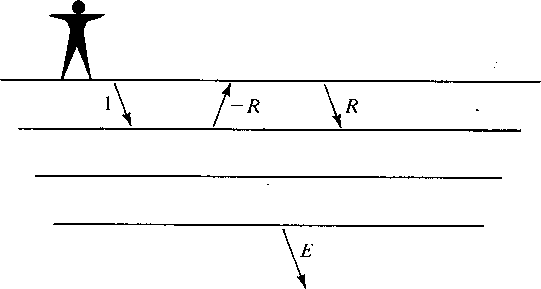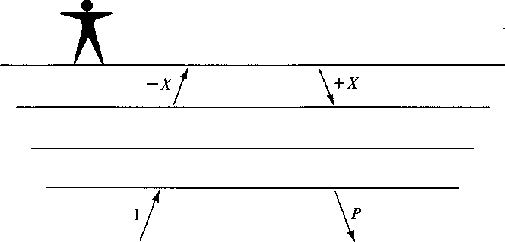The proof of this conjecture for a one dimensional earth is given as a
problem set in Claerbout 1979.
The outline of the derivation that follows uses
the Z transform approach developed there, where Z is the unit
delay operator ![]() .
.
Consider a plane-layered Earth model with the reflection seismology geometry shown in Figure 1. If the system is lossless then the energy flux through the top layer has to be equal to the flux through the half-space below. Therefore,
| (1) |
| (2) |
|
8-7
Figure 1 Reflection seismology geometry - Claerbout (1979). |  |
Comparing the reflection seismology geometry with the earthquake seismology geometry shown in Figure 2 gives E(Z) = X(Z) by reciprocity. Therefore
| (3) |
This theorem can be extended to a two dimensional plane-layered Earth by considering slant stacks Claerbout (1984).
|
8-8
Figure 2 Earthquake seismology geometry - from Claerbout (1979). All the waves (1, X and P) could be multiplied by the same random signal, and this would not effect their spectra or auto-correlation functions. |  |